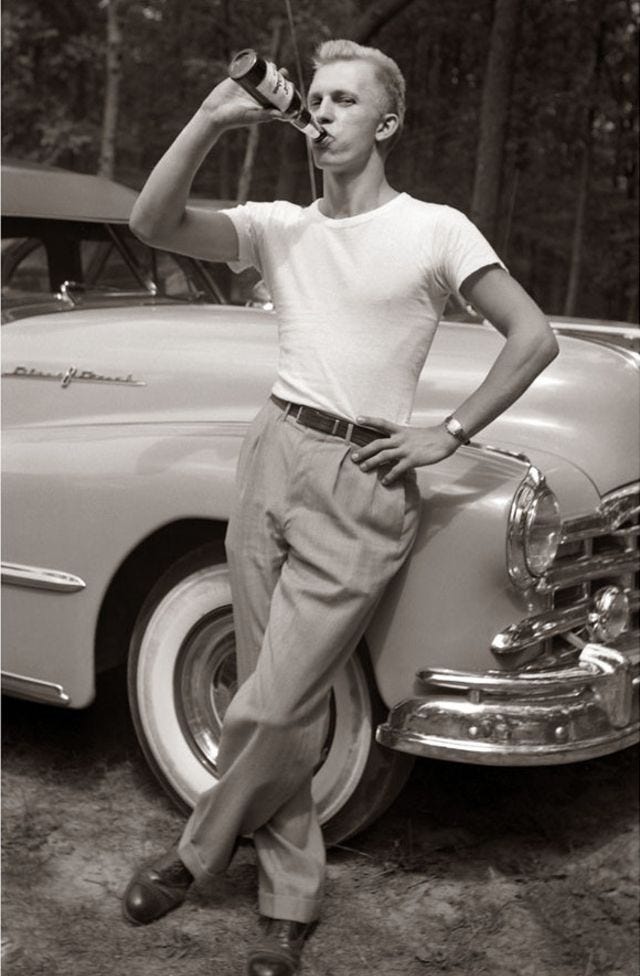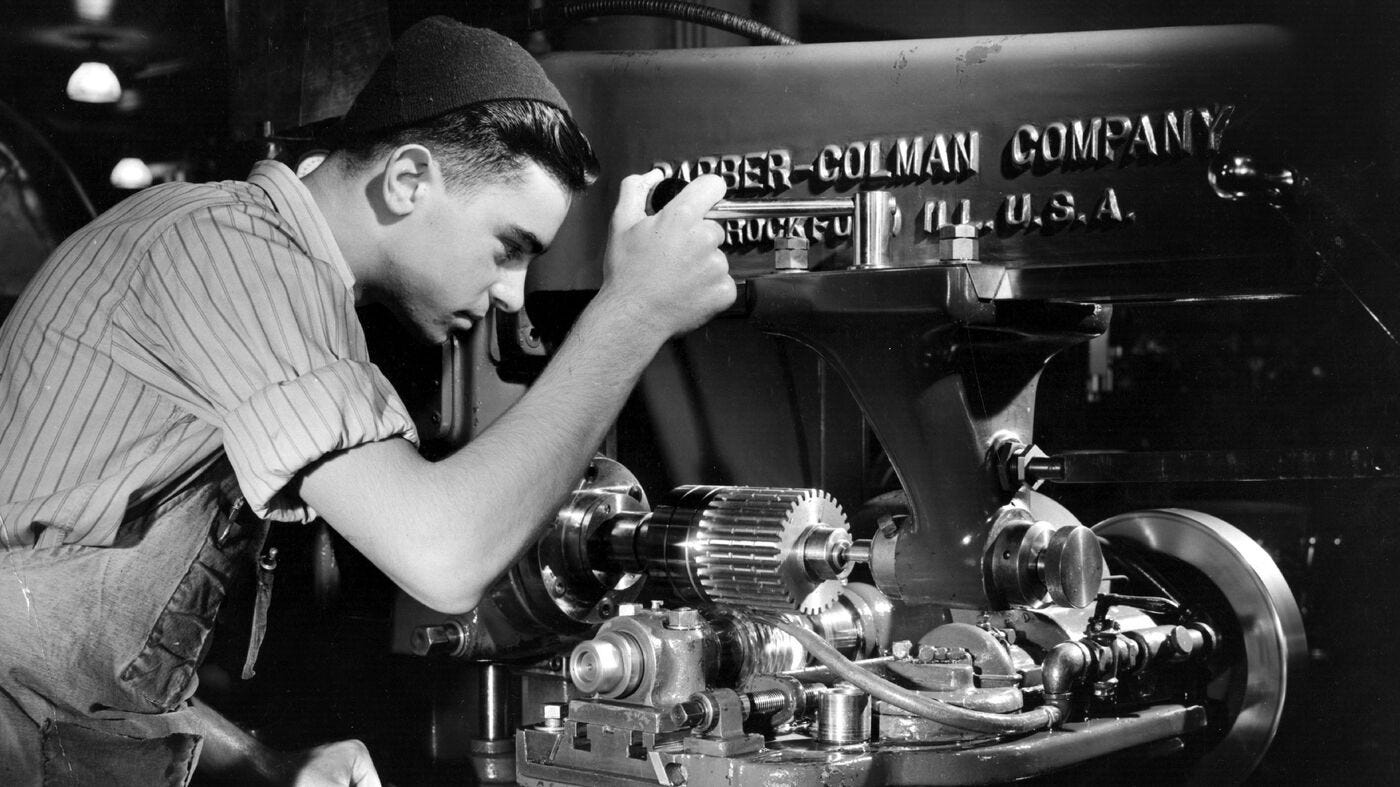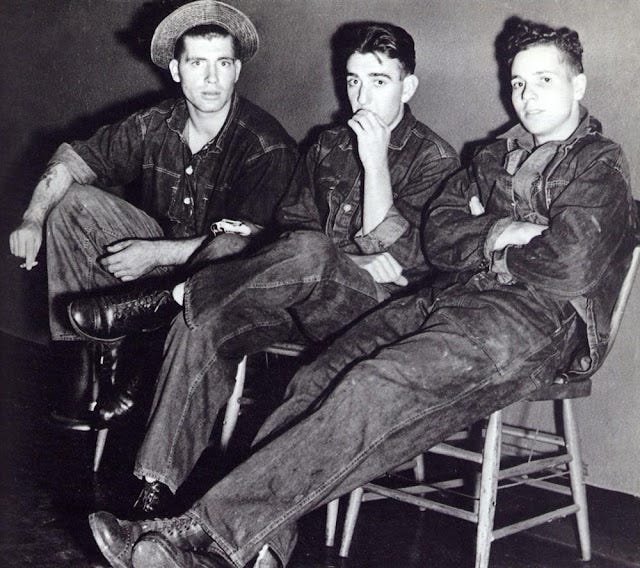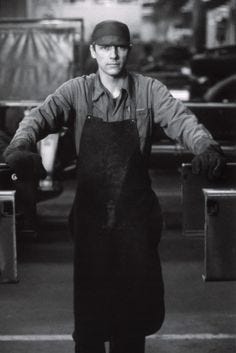The Traditional Pathway to Success
A key foundation for the prosperous American working class of previous generations.
In a previous article, I listed about a dozen reasons for the strong Upward Mobility of the American working class and poor between 1947 and 1965. These reasons include:
Strong economic growth
A rapidly growing manufacturing sector that faced little foreign competition
Strong private-sector trade unions
Limited social programs
High male labor participation rates
High marriage rates
High rates of geographical mobility
Very limited rates of immigration
Affordable housing caused by massive housing construction in suburbs
Massive expansion of highway system to connect the growing suburbs with jobs.
The strong economic growth laid the foundation to make this all possible. Without strong economic growth, none of the other factors would have mattered. This is exactly why I believe that promoting economic growth should be the #1 priority of government. But economic growth alone does not guarantee that the benefits of that economic growth are widely shared. That is why I advocate for a progress-based reform agenda to:
Promote long-term economic growth in both wealthy nations and developing nations.
Create a prosperous working class.
Promote a clear pathway that enables youths from low-income families to enter the prosperous working class.
The economic, social, and political conditions between 1947 and 1965 achieved all of those goals. The rapidly growing manufacturing sector that faced little foreign competition and strong private-sector trade unions meant that young men could expect to get a reasonably well-paying job without needing anything beyond a high-school degree. In many cases, even high-school drop-outs could get well-paying jobs.
The limited social programs, particularly for those under age 65, meant that most working-class and poor families had no alternative sources of income other than work. This also gave the working-class and poor men and single women a strong incentive to work full-time. This also gave the working-class and poor families the incentive to move to regions with strong economic growth. Women from working-class and poor families also had a strong incentive to get married before having children.
The massive expansion of housing and highways plus individuals purchasing cars and affordable energy meant that working-class and poor families had a solid foundation to have a comparatively high standard of living on what we would today consider to be low wages.
All of the above factors enabled typical working-class and poor persons to take advantage of the material progress that surrounded them. But being able to take advantage is not the same as actually doing so. Something else was needed to make youths from the working-class and the poor make the right choices that promoted their own Upward Mobility.
I call that something the “Traditional Pathway to Success.”
Read more of my articles on American Progress and Upward Mobility:
Traditional Pathway to Success (this article)
Books in my “From Poverty to Progress” book series:
Strong Belief in the Pathway to Success
A final reason for the upward mobility of the working class and poor of the period between 1947 and 1965 was the belief system of the American people. While it is difficult to provide solid statistical evidence for it, the typical American believed in what we might call a pathway to success. At the very least, they acted as if they believed in it.
What I call the “Traditional Pathway to Success” gave a clearly defined pathway for young people to follow throughout their teens and twenties. No one believed that it was the pathway to riches or fame, but they all knew that it maximized their chances of a better material life and long-term satisfaction.
The Traditional Pathway to Success went something like this:
Go to public school and graduate from high school.
(for boys) Learn a trade from your father, local trade union, or employer.
(for girls) Learn household and mothering skills from your mother and other female relatives.If you do not live in an area with job opportunities, relocate to an area that does.
Get a full-time job
Get married and stay married.
Buy a house and a car.
Have children.
(for men) Keep working full-time until you qualify for a pension.
(for married women with children) Drop out of the labor force and focus on the household and children.
To the best of my knowledge, this Traditional Pathway to Success was never written down, but it was passed down from parents to children. I cannot prove that most people believed in these steps, but I have known enough people of the pre-Baby Boom generation to know that it was widely upheld. I am confident that if we could poll previous generations, there would be a relatively broad consensus on its basic principles.
The Traditional Pathway to Success was the accumulated wisdom of previous generations on how someone can survive and have a reasonably prosperous life. For most Americans, the above steps were simply common sense. They did not think much about it. They just did it because other people were doing it, and the results seemed to be positive.
Of course, not everybody followed this Traditional Pathway to Success, but those that did not were regarded as examples of failures to avoid rather than models to emulate. These beliefs and behaviors existed because of the accumulated evidence from previous generations as to what worked.
Most importantly, those in positions of authority preached this Traditional Pathway to Success to the young. Parents and members of the extended family taught some version of the Pathway to their children. Preachers and teachers reinforced the teaching in church and school. Employers organized the workplace around these principles. Anyone who tried to teach children differently would be scolded and shunned by their peers.
Though we might think of it as traditional today, it was a modified version of a Pre-Industrial Pathway to Success from a time when most Americans were farmers. The Pre-Industrial Pathway to Success went something like this:
Go to public school.
(for boys) Learn farming skills from your father and other male relatives.
(for girls) Learn household, mothering, and light farming skills from your mother and other female relatives.If you are not inheriting the family farm, relocate to an area where you can purchase enough arable land to support a family.
Get married and stay married.
Have children.
(for men) Keep working on the farm until you die.
(for married women with children) Focus on the household and children.
I believe this Pathways to Success was a critical belief system that was foundational to the economic success of Americans before 1970. It not only enabled upward mobility for common everyday people but it also increased the overall material progress for the rest of society.
Material progress is not just about the heroic innovations of entrepreneurs and engineers. It is also about how everyday people built better lives for themselves and their families. Those people built the infrastructure that the great innovators make their key breakthroughs. It those people who:
Grew the food
Extracted the mineral, timber, and energy resources
Transported the food and energy into and throughout the cities
Built, maintained, and repaired houses, factories, and commercial buildings
Worked in the industries that exported their goods.
Staffed the urban infrastructures that made cities livable (water, sanitation, electrical grid, transportation, etc)
Protected the nation from external threats
The combination of the material circumstances that I outlined in the previous article and this belief system made America from 1947 to 1965 an ideal situation for working-class and poor America. This led to a massive transformation in their material standard of living.
Ironically on another continent, the Soviet Union had established what they portrayed as a Working-class Paradise. Meanwhile, the Americans built an economic, social, and political system that achieved results far better for the working class than the Soviet model.
And they pumped out the babies
The high marriage rates and early age of marriage for women also created a “baby boom.” For the first time in world history, an entire generation of youngsters could take material progress for granted. And that generation was so large that it created its own youth culture. That generation was what we now call the “Baby Boom generation.”
What would that generation do with that material progress?
But then many Boomers rejected it
By the late 1960s, however, many young Baby Boomers started to find the Traditional Pathway to Success stifling and pushed for change. Many of those changes, particularly empowering women to move into traditionally male-oriented jobs, were positive changes. Many women wanted to be able to make the same choices as men, even if they decided to have children.
Unfortunately, Baby Boomers ignored the fact that the Traditional Pathway to Success helped to channel young people into a prosperous working class. So instead of substituting a modernized version of the pathway, they undermined the moral legitimacy of teaching any pathway.
We must find a better way. We need a modernized version of the Pathway to Success (the topic of subsequent articles in this series).
Read more of my articles on American Progress and Upward Mobility:
Traditional Pathway to Success (this article)
Books in my “From Poverty to Progress” book series:

















I agree with the merit of that success sequence being relatively embedded in the culture, although I suspect the counterculture portion of the Boomer generation was smaller than the media portrayed it.
We need to remember that "the pill" also became available in the early 1960's and was probably pretty well used and accepted by women and their doctors into the 70's and beyond. The cultural impacts from that technology on behalf of women are not always mentioned or made explicit.
For our modern age, I would add two elements to the success sequence:
1) provide a decent course in personal finance and investment to all students in HS. Probably at least 8 hours of instruction, but perhaps a few weeks worth. Help them understand that they eventually need to amass a chunk of money that will "throw off" 3 to 4% for them to live on if they want to be independent of a boss's control, along with greater political freedom, etc. Today that translates into $2M to $4M, not the under $300K levels far too many people may have achieved, even with the best of intentions. It sounds insurmountable, but that is what the course has to show is doable with the right mind set, discipline, and drive, etc.
2) provide a cultural alignment to promote saving and investing, with the goal of becoming financially independent as soon as practical [perhaps as early as 35 to 45, but by 55 to 65 at the latest]. That means different things for different people in various circumstances, but would include incentives to use IRA's and 401K's, plus developing portfolios beyond those vehicles, etc. The ability of people to avoid living paycheck to paycheck because they have 6 to 12 months of income saved up would be a powerful mode to reduce the "something for nothing" attitude promoted by too many, and many on the Left. Then expand that initiative and capability to savings programs for mortgages, kids education, healthcare and insurance, and retirement.
The somewhat hidden message in all of that is that there is no guarantee of absolute security and protection from life events and trials, but wise planning and preparation can help reduce the pains (great or small) that come our way. If it was easy, it would be more common -- but it is common enough that many more folks could achieve that level of independence if they understood what was required and what the real benefits are or would be.
That's one beautiful car and I know that beer has to be good as hell the way he's drinking it.